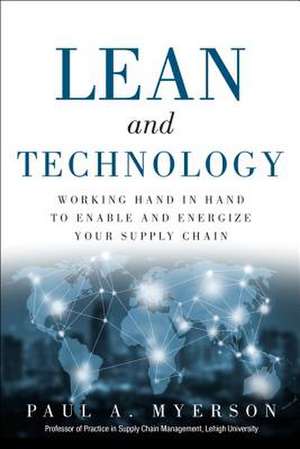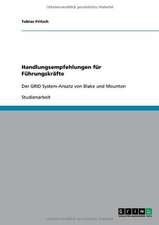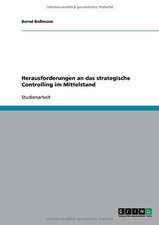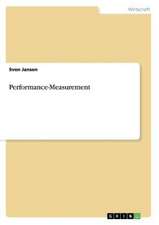Lean and Technology
Autor Paul Myersonen Limba Engleză Paperback – 27 oct 2016
- PLAN to optimize supply chain networks, demand forecasting, master production scheduling, and S&OP
- SOURCE more effectively with today's MRP and procurement/e-procurement technologies
- MAKE higher-value "lean production" products with modern ERP, MES, and short-term scheduling systems
- DELIVER the right customer solutions at the right time and cost via advanced DRP, TMS, and order fulfillment systems
- RETURN products and materials with state-of-the-art reverse logistics systems
- ENABLE continuous improvement via carefully chosen measurements, metrics, and analytics
Preț: 244.11 lei
Nou
Puncte Express: 366
Preț estimativ în valută:
46.72€ • 48.71$ • 38.83£
46.72€ • 48.71$ • 38.83£
Carte disponibilă
Livrare economică 28 februarie-14 martie
Livrare express 13-19 februarie pentru 31.92 lei
Preluare comenzi: 021 569.72.76
Specificații
ISBN-13: 9780134291451
ISBN-10: 013429145X
Pagini: 320
Dimensiuni: 175 x 229 x 25 mm
Greutate: 0.5 kg
Editura: Pearson Education
ISBN-10: 013429145X
Pagini: 320
Dimensiuni: 175 x 229 x 25 mm
Greutate: 0.5 kg
Editura: Pearson Education
Notă biografică
Paul A. Myerson is a Professor of Practice in Supply Chain Management at Lehigh University and holds a B.S. in Business Logistics and an M.B.A. in Physical Distribution.
Professor Myerson has an extensive background as a Supply Chain and Logistics professional, consultant, and teacher. Prior to joining the faculty at Lehigh, Professor Myerson has been a successful change catalyst for a variety of clients and organizations of all sizes, having over 30 years experience in Supply Chain and Logistics strategies, systems, and operations that have resulted in bottom-line improvements for companies such as General Electric, Unilever, and Church and Dwight (Arm & Hammer).
Professor Myerson created and has marketed a Supply Chain Planning software tool for Windows to a variety of companies worldwide since 1998.
He is the author of the books Lean Supply Chain & Logistics (McGraw-Hill, 2012), Lean Wholesale and Retail (McGraw-Hill, 2014), and Supply Chain and Logistics Management Made Easy (Pearson, 2015); as well as a Lean Supply Chain and Logistics Management simulation training game and training package (Enna.com, copyright 2012-13).
Professor Myerson also writes a column on Lean Supply Chain for Inbound Logistics Magazine and a blog for Industry Week magazine.
Professor Myerson has an extensive background as a Supply Chain and Logistics professional, consultant, and teacher. Prior to joining the faculty at Lehigh, Professor Myerson has been a successful change catalyst for a variety of clients and organizations of all sizes, having over 30 years experience in Supply Chain and Logistics strategies, systems, and operations that have resulted in bottom-line improvements for companies such as General Electric, Unilever, and Church and Dwight (Arm & Hammer).
Professor Myerson created and has marketed a Supply Chain Planning software tool for Windows to a variety of companies worldwide since 1998.
He is the author of the books Lean Supply Chain & Logistics (McGraw-Hill, 2012), Lean Wholesale and Retail (McGraw-Hill, 2014), and Supply Chain and Logistics Management Made Easy (Pearson, 2015); as well as a Lean Supply Chain and Logistics Management simulation training game and training package (Enna.com, copyright 2012-13).
Professor Myerson also writes a column on Lean Supply Chain for Inbound Logistics Magazine and a blog for Industry Week magazine.
Cuprins
PART I: INTRODUCTION AND OVERVIEW 1
Chapter 1 Lean Supply Chain and Technology: A Perfect Combination 3
It’s a Small World After All 3
How Big an Opportunity Is It? 5
The Extended and Often Global Supply Chain and Technology 6
Information Systems (IS) Versus Information Technology (IT) 6
Risks and Rewards 7
Linking Competitive Strategy to the Value Chain 7
Competitive Strategy, Business Processes, and IT Structure Aligned 11
Using the SCOR Model to Help Enable Lean Opportunities with Technology 13
Chapter 2 The Growing Importance of the Supply Chain and Technology to Business and Society 15
Supply Chain Defined 15
History of Supply Chain and Logistics Management 17
The Role of Information Technology in the Supply Chain 19
Supply Chain Information 19
Interactive View of Information 19
Importance of Integration for Sharing Information 21
Viewpoints of Supply Chain Information Systems 22
Supply Chain Macro Processes 22
Supply Chain Information Technologies 23
Supply Chain Technology Trends 24
Chapter 3 Lean Concepts and Their Applications in the Supply Chain 27
Lean Background 27
Value-Added Versus Non-Value-Added Activities 28
Waste 29
Lean Culture and Teamwork 35
Elements of a Lean Supply Chain Strategy 37
Basic Tools 37
Advanced Tools 42
Tools for Identifying and Solving Problems 49
Lean, Supply Chain, and Technology 50
Chapter 4 Software and Hardware Sourcing Process and Applications of Supply Chain and Logistics Management Technology 53
The Procurement Process 53
Identify and Review Requirements 53
Establish Specifications 55
Identify and Select Suppliers 55
Determine the Right Price 57
Issue Purchase Orders 58
Follow Up to Assure Correct Delivery 60
Receive and Accept Goods 60
Approve Invoice for Payment 60
Software and Hardware Selection 61
Phase 1—Planning and Budgeting 61
Phase 2—Requirements Analysis 61
Phase 3—Vendor Research 62
Phase 4—Demonstrations 62
Phase 5—Final Decision 62
Phase 6—Contract Negotiation 63
Implementation Partner/VAR Selection 63
Make or Buy 63
SCM System Costs and Options 64
“Best-in-Class” Versus Single Integrated Solution 64
Consultants 65
Project Management 65
Supply Chain Software Market 66
Supply Chain Planning (SCP) 67
Supply Chain Execution (SCE) 68
Other Supply Chain Technologies 69
Current and Future Trends in Supply Chain Software 70
Short-Term Supply Chain Technology Trends 70
Emerging Supply Chain Technology Trends 70
PART II: PLAN 73
Chapter 5 Supply Chain Network Optimization 75
Strategic Planning Level 75
Tactical Planning Level 75
Operational Planning Level 76
Importance of the Supply Chain Network 77
The Location Decision and Its Impact on Value 77
How and Why Network Optimization Technology Can Help Enable a Lean Supply Chain 80
Network Optimization Technology 80
Technology Options 82
Supply Chain Network Optimization Technology Case Studies 83
Chapter 6 Demand Forecasting Systems 87
A Lean Approach to Forecasting 88
Typical Forecasting Process 89
Lean Forecasting Process 90
Forecasting Technology Options and Requirements 94
Lean Forecasting Technology Case Studies 96
Chapter 7 Master Production Scheduling 101
Master Production Schedule (MPS) Defined 101
Lean Scheduling 102
MPS/Production Planning Technology Options and Requirements 104
Lean and ERP for Production Planning: A Fine Balancing Act 104
Lean Production Planning and Technology Case Studies 105
Chapter 8 Sales and Operations Planning (S&OP) 111
Sales and Operations Planning (S&OP) Defined 111
S&OP and Lean 113
Working Together 114
S&OP/Aggregate Planning Technology 115
Lean S&OP/Aggregate Planning and Technology Case Studies 117
PART III: SOURCE 123
Chapter 9 Material Requirements Planning (MRP) 125
Procurement and Purchasing Defined 125
The Purchasing Process 126
Types of Business Purchasing 127
Material Requirements Planning Described 128
Lean and Material Requirements Planning 130
Material Requirements Planning Technology 133
Lean MRP and Technology Case Studies 135
Chapter 10 Procurement (and e-Procurement) Systems 139
The Procurement Process 139
Automation of Procurement Documents and Processes 139
Lean and Procurement 140
Procurement Technology 143
Lean Procurement and Technology Case Studies 145
PART IV: MAKE 149
Chapter 11 Enterprise Resource Planning (ERP) Systems 151
Lean Supply Chain and ERP Systems 152
ERP Technology 154
Lean Supply Chain and ERP Systems Case Studies 156
Chapter 12 Manufacturing Execution Systems (MES) 161
The Role of MES in Today’s Competitive Environment 162
Manufacturing Execution Systems and Lean 163
MES, Lean, and Visual Management Systems 164
Lean Supply Chain and Manufacturing Execution Systems Case Studies 165
Chapter 13 Short-Term Scheduling 171
Short-Term Scheduling Process 172
Continuous Versus Discrete Industry Scheduling 173
Scheduling in Service Industries 175
Lean Short-Term Scheduling 176
Advanced Planning and Scheduling (APS) Systems 176
Advanced Planning and Scheduling Systems Technology 178
Advanced Planning and Scheduling Systems Technology Case Studies 178
PART V: DELIVER 183
Chapter 14 Distribution Requirements Planning (DRP) 185
Lean and DRP 187
DRP Software 188
DRP Case Studies 189
Chapter 15 Transportation Management Systems (TMS) 195
Lean and TMS 196
Types of Savings and Improvements Resulting from the Use of a TMS 197
Transportation Management System Technology 198
TMS Case Studies 199
Chapter 16 Order-Fulfillment Systems 205
Warehouse Management System (WMS) 205
Order Management Systems (OMS) 206
Customer Relationship Management (CRM) Systems 207
Lean and Order Fulfillment 208
Order Placement 209
Order Processing 209
Order Preparation and Loading 210
Order Delivery 210
Faster Fulfillment 211
Order Fulfillment Case Studies 212
PART VI: RETURN 217
Chapter 17 Reverse Logistics Systems 219
Lean Reverse Logistics 220
Elements Key to a Lean Reverse Logistics Process 220
Lean and Reverse Logistics Technology Cases 226
PART VII: ENABLE 231
Chapter 18 Measurements, Metrics, and Analytics 233
Measurement and Analysis Process 233
What and Where to Measure 234
Using the SCOR Model to Measure and Control 234
Supply Chain Analytics 236
Supply Chain Decision Support and Analytics Technology 238
Lean and Supply Chain Analytics Technology Case Studies 240
PART VIII: WHERE DO WE GO FROM HERE? 243
Chapter 19 Collaborative Supply Chain Systems 245
The 80/20 Rule 246
Collaboration for a Lean Supply Chain 247
Integrated and Collaborative Technology for a Leaner Supply Chain 250
Lean and Collaboration Technology Case Studies 251
Chapter 20 Emerging Technologies and Their Potential Impacts on the Lean Supply Chain 255
General Supply Chain Trends 256
Supply Chain Software and Connectivity Technology Trends 257
Supply Chain Software Best Practices 258
Supply Chain Hardware Technology Trends 261
Hardware Technologies for a Competitive Advantage in the Next Decade 265
Future Supply Chain Technology Spending 265
Looking Ahead 266
References 269
Index 279
Chapter 1 Lean Supply Chain and Technology: A Perfect Combination 3
It’s a Small World After All 3
How Big an Opportunity Is It? 5
The Extended and Often Global Supply Chain and Technology 6
Information Systems (IS) Versus Information Technology (IT) 6
Risks and Rewards 7
Linking Competitive Strategy to the Value Chain 7
Competitive Strategy, Business Processes, and IT Structure Aligned 11
Using the SCOR Model to Help Enable Lean Opportunities with Technology 13
Chapter 2 The Growing Importance of the Supply Chain and Technology to Business and Society 15
Supply Chain Defined 15
History of Supply Chain and Logistics Management 17
The Role of Information Technology in the Supply Chain 19
Supply Chain Information 19
Interactive View of Information 19
Importance of Integration for Sharing Information 21
Viewpoints of Supply Chain Information Systems 22
Supply Chain Macro Processes 22
Supply Chain Information Technologies 23
Supply Chain Technology Trends 24
Chapter 3 Lean Concepts and Their Applications in the Supply Chain 27
Lean Background 27
Value-Added Versus Non-Value-Added Activities 28
Waste 29
Lean Culture and Teamwork 35
Elements of a Lean Supply Chain Strategy 37
Basic Tools 37
Advanced Tools 42
Tools for Identifying and Solving Problems 49
Lean, Supply Chain, and Technology 50
Chapter 4 Software and Hardware Sourcing Process and Applications of Supply Chain and Logistics Management Technology 53
The Procurement Process 53
Identify and Review Requirements 53
Establish Specifications 55
Identify and Select Suppliers 55
Determine the Right Price 57
Issue Purchase Orders 58
Follow Up to Assure Correct Delivery 60
Receive and Accept Goods 60
Approve Invoice for Payment 60
Software and Hardware Selection 61
Phase 1—Planning and Budgeting 61
Phase 2—Requirements Analysis 61
Phase 3—Vendor Research 62
Phase 4—Demonstrations 62
Phase 5—Final Decision 62
Phase 6—Contract Negotiation 63
Implementation Partner/VAR Selection 63
Make or Buy 63
SCM System Costs and Options 64
“Best-in-Class” Versus Single Integrated Solution 64
Consultants 65
Project Management 65
Supply Chain Software Market 66
Supply Chain Planning (SCP) 67
Supply Chain Execution (SCE) 68
Other Supply Chain Technologies 69
Current and Future Trends in Supply Chain Software 70
Short-Term Supply Chain Technology Trends 70
Emerging Supply Chain Technology Trends 70
PART II: PLAN 73
Chapter 5 Supply Chain Network Optimization 75
Strategic Planning Level 75
Tactical Planning Level 75
Operational Planning Level 76
Importance of the Supply Chain Network 77
The Location Decision and Its Impact on Value 77
How and Why Network Optimization Technology Can Help Enable a Lean Supply Chain 80
Network Optimization Technology 80
Technology Options 82
Supply Chain Network Optimization Technology Case Studies 83
Chapter 6 Demand Forecasting Systems 87
A Lean Approach to Forecasting 88
Typical Forecasting Process 89
Lean Forecasting Process 90
Forecasting Technology Options and Requirements 94
Lean Forecasting Technology Case Studies 96
Chapter 7 Master Production Scheduling 101
Master Production Schedule (MPS) Defined 101
Lean Scheduling 102
MPS/Production Planning Technology Options and Requirements 104
Lean and ERP for Production Planning: A Fine Balancing Act 104
Lean Production Planning and Technology Case Studies 105
Chapter 8 Sales and Operations Planning (S&OP) 111
Sales and Operations Planning (S&OP) Defined 111
S&OP and Lean 113
Working Together 114
S&OP/Aggregate Planning Technology 115
Lean S&OP/Aggregate Planning and Technology Case Studies 117
PART III: SOURCE 123
Chapter 9 Material Requirements Planning (MRP) 125
Procurement and Purchasing Defined 125
The Purchasing Process 126
Types of Business Purchasing 127
Material Requirements Planning Described 128
Lean and Material Requirements Planning 130
Material Requirements Planning Technology 133
Lean MRP and Technology Case Studies 135
Chapter 10 Procurement (and e-Procurement) Systems 139
The Procurement Process 139
Automation of Procurement Documents and Processes 139
Lean and Procurement 140
Procurement Technology 143
Lean Procurement and Technology Case Studies 145
PART IV: MAKE 149
Chapter 11 Enterprise Resource Planning (ERP) Systems 151
Lean Supply Chain and ERP Systems 152
ERP Technology 154
Lean Supply Chain and ERP Systems Case Studies 156
Chapter 12 Manufacturing Execution Systems (MES) 161
The Role of MES in Today’s Competitive Environment 162
Manufacturing Execution Systems and Lean 163
MES, Lean, and Visual Management Systems 164
Lean Supply Chain and Manufacturing Execution Systems Case Studies 165
Chapter 13 Short-Term Scheduling 171
Short-Term Scheduling Process 172
Continuous Versus Discrete Industry Scheduling 173
Scheduling in Service Industries 175
Lean Short-Term Scheduling 176
Advanced Planning and Scheduling (APS) Systems 176
Advanced Planning and Scheduling Systems Technology 178
Advanced Planning and Scheduling Systems Technology Case Studies 178
PART V: DELIVER 183
Chapter 14 Distribution Requirements Planning (DRP) 185
Lean and DRP 187
DRP Software 188
DRP Case Studies 189
Chapter 15 Transportation Management Systems (TMS) 195
Lean and TMS 196
Types of Savings and Improvements Resulting from the Use of a TMS 197
Transportation Management System Technology 198
TMS Case Studies 199
Chapter 16 Order-Fulfillment Systems 205
Warehouse Management System (WMS) 205
Order Management Systems (OMS) 206
Customer Relationship Management (CRM) Systems 207
Lean and Order Fulfillment 208
Order Placement 209
Order Processing 209
Order Preparation and Loading 210
Order Delivery 210
Faster Fulfillment 211
Order Fulfillment Case Studies 212
PART VI: RETURN 217
Chapter 17 Reverse Logistics Systems 219
Lean Reverse Logistics 220
Elements Key to a Lean Reverse Logistics Process 220
Lean and Reverse Logistics Technology Cases 226
PART VII: ENABLE 231
Chapter 18 Measurements, Metrics, and Analytics 233
Measurement and Analysis Process 233
What and Where to Measure 234
Using the SCOR Model to Measure and Control 234
Supply Chain Analytics 236
Supply Chain Decision Support and Analytics Technology 238
Lean and Supply Chain Analytics Technology Case Studies 240
PART VIII: WHERE DO WE GO FROM HERE? 243
Chapter 19 Collaborative Supply Chain Systems 245
The 80/20 Rule 246
Collaboration for a Lean Supply Chain 247
Integrated and Collaborative Technology for a Leaner Supply Chain 250
Lean and Collaboration Technology Case Studies 251
Chapter 20 Emerging Technologies and Their Potential Impacts on the Lean Supply Chain 255
General Supply Chain Trends 256
Supply Chain Software and Connectivity Technology Trends 257
Supply Chain Software Best Practices 258
Supply Chain Hardware Technology Trends 261
Hardware Technologies for a Competitive Advantage in the Next Decade 265
Future Supply Chain Technology Spending 265
Looking Ahead 266
References 269
Index 279







